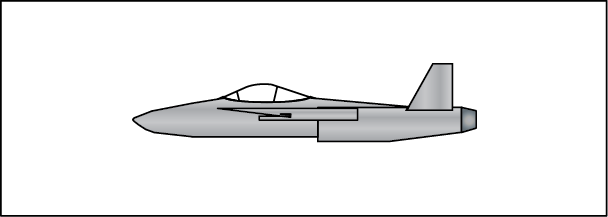Applying Newton's Second Law - Example Problem 5.6-5
The fighter airplane shown below has a mass of 30,000 kg and a maximum thrust-to-weight ratio of 1:1. If the airplane is cruising horizontally at 500 km/h when the engine engages its afterburners to generate its maximum possible thrust, how far does the airplane travel during the following 5 seconds? You may neglect the effect of air drag on the airplane. If you now consider air drag, how far must the plane travel to reach the same velocity it obtained when you ignored air drag? The air drag can be modeled as D = Cv2, where C = 8 kg/m and v is the speed of the plane in meters per second.

Given:
- m = 30,000 kg
- T = mg
- D = Cv2
- C = 8 kg/m
- vo = 50 km/h = 138.89 m/s
- Δt = 5 s
Find:
- Δs
- Δsdrag
Video solution:
The following video walks you through the solution to this problem. It is suggested that you try solving the problem first and then, if you have difficulties with the solution, watch the video for help.
Interactive solution:

